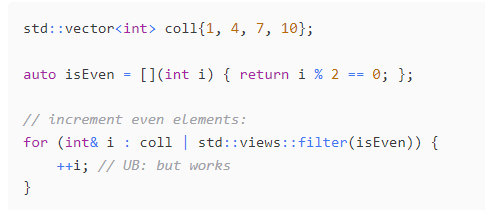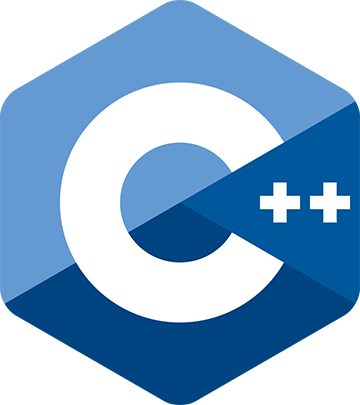Mutating Through a Filter -- Barry Revzin
 Nico Josuttis gave a talk recently that included an example and I wanted to explain what’s going on in this example, what the issue is, and what (if anything) is broken.
Nico Josuttis gave a talk recently that included an example and I wanted to explain what’s going on in this example, what the issue is, and what (if anything) is broken.
Mutating Through a Filter
by Barry Revzin
From the article:
As with a lot of my explanations, we have to start from the beginning.
The C++ iterator model has a number of iterator categories: input, forward, bidirectional, random access, and (since C++20) contiguous. This post only needs to consider the first two.
An input range (a range whose iterator is an input iterator) is a single-pass range. You can only ever call
begin()one time on it. You can’t have multiple different input iterators into the same range - incrementing one immediately invalidates any existing copies.

 C language was defined to cover a large range of computer architectures, including many which would be considered museum relics today. It therefore takes a very conservative view of what is permitted, so that it remains possible to write C programs for those ancient systems. (Which weren’t quite so ancient at the time.)
C language was defined to cover a large range of computer architectures, including many which would be considered museum relics today. It therefore takes a very conservative view of what is permitted, so that it remains possible to write C programs for those ancient systems. (Which weren’t quite so ancient at the time.) Event-driven applications, such as GUIs or servers, often apply the architecture pattern Reactor. A Reactor can accept multiple requests simultaneously and distribute them to different handlers.
Event-driven applications, such as GUIs or servers, often apply the architecture pattern Reactor. A Reactor can accept multiple requests simultaneously and distribute them to different handlers. Last time I showed a couple of questions about initialization. Try them
Last time I showed a couple of questions about initialization. Try them  During the construction of an XML file when you write an element, it is obvious that the last thing that you do is to write the closing tag. By obvious we mean: writing it down adds no new information (there is no other possible final instruction for this task), and it would be a bug if this instruction wasn’t there.
During the construction of an XML file when you write an element, it is obvious that the last thing that you do is to write the closing tag. By obvious we mean: writing it down adds no new information (there is no other possible final instruction for this task), and it would be a bug if this instruction wasn’t there. In a previous
In a previous  Every year we run Pure Virtual C++: a free one-day virtual conference for the whole C++ community. Next month we’re doing it again!
Every year we run Pure Virtual C++: a free one-day virtual conference for the whole C++ community. Next month we’re doing it again!